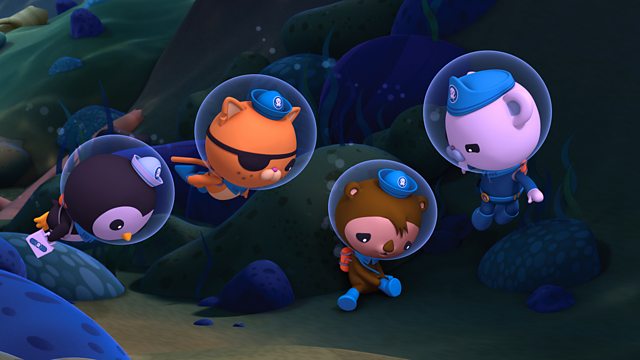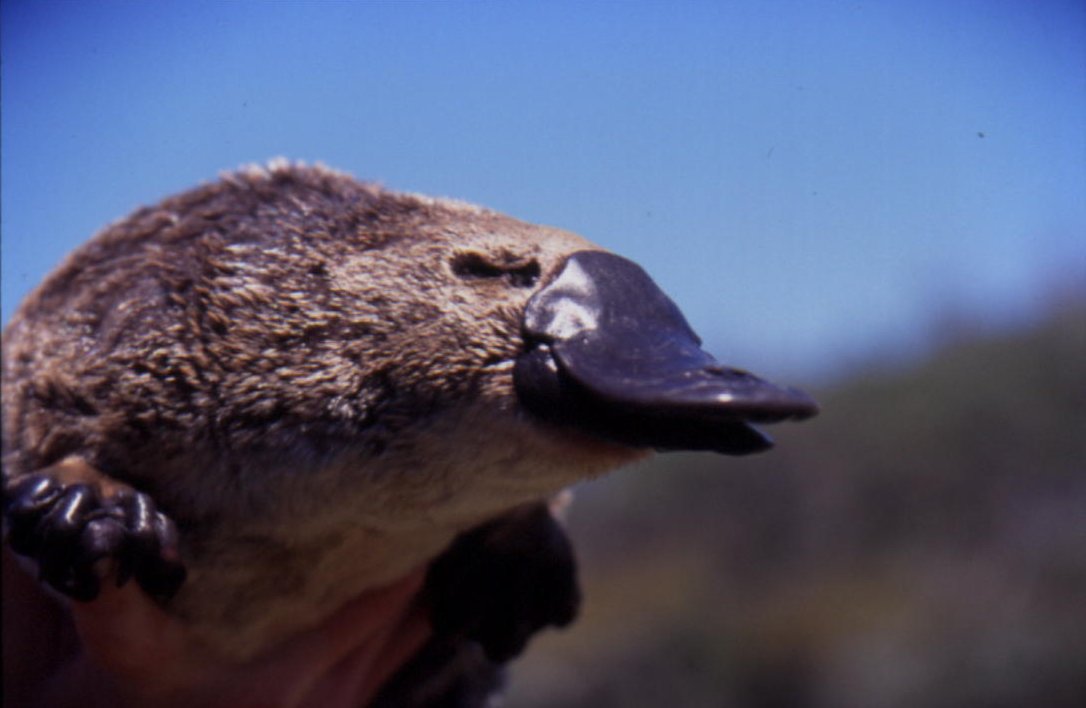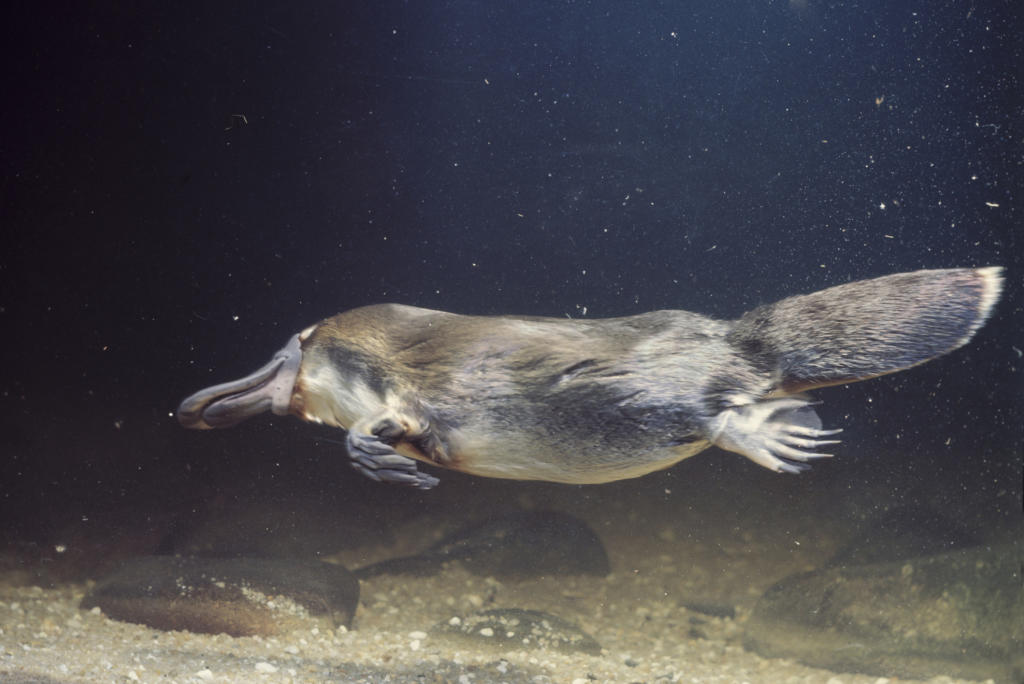
While Duck Billed Platypus may produce young by laying eggs? It feeds them with milk like any other mammal. (a monotreme is a mammal that lays eggs rather than bear live young. The platypus' electroreception is the most sensitive of any monotreme. they locate their prey in part by dedetecting electric fields generated by muscular contractions! Duck Billed Platypus are the only mammals (apart from at least one species of dolphin) known to have a sense of electroreception. The venom is composed largely of defensin-like proteins three of which are unique to the platypus. The venom is not lethal to humans, but the pain is so excruciating that the victim may be incapacitated. It is illegal.- The Duck Billed Platypus is a semiaquatic egg-laying mammal that while both male and female platypuses are born with ankle spurs its the male's spur that deliver venom. The opening of the burrow has a tight fit and squeezes water from its fur.During the day, it shelters in its burrow.Males have venomous spurs on their hind legs.It has a relatively low body temperature of 32☌, which is low for a mammal.It grinds its food between two bony plates on its upper and lower jaws.The platypus stores its catch in cheek pouches.Occasionally, it also eats fish, frogs and insects. The platypus feeds on small bottom-dwelling creatures.Its beak works like a metal detector or radar to locate its prey under the gravel of a river bed.This beak is flat, rubbery and looks like it's made of plastic.It is also called the Duck-billed platypus because it has a beak like a duck.The platypus uses its webbed front feet to paddle through water, steers and brakes with its back feet and uses its tail as a stabiliser.The platypus is about the size of a cat.The male platypus's spurs can inject venom into its victim. The platypus is an example of what early mammals may have been like.
#Duckbill platypus stinger skin

They mate with any male in their territory, assuming he is probably the biggest and strongest in the area. Females do not appear to be picky about the male they couple up with. The victor wins whatever females reside in his newly won territory.

These fights are rarely fatal the toxins usually paralyse the loser until it retreats. To do this, the male produces venom in its rear spurs and battles other males for the female's affection. Scientists believe the platypus lost its stomach because its diet does not require a complex organ, such as a stomach, to break down its food.ĭuring the mating season between June and October, a male platypus has only one aim: to win territory and secure any females within it. Instead, it has a sac between its oesophagus and intestine that secretes powerful digestive acids and enzymes to break down its food. The platypus spends 10-12 hours a day foraging for food and consumes 15-30% of its body mass in food each day. Once on the surface, the platypus retrieves the morsels stored in its cheek pouches, grinds its food between two bony plates on their upper and lower jaws, and swallows the mashed-up food. In 30 to 60 seconds, when its oxygen supply starts to run out, the platypus heads back up to the surface.

Then, it continues to search for more prey. It stores its catch temporarily in cheek pouches located just behind its jaw. Then, quickly homing in on these signals, the platypus shovels them out of the stream-bed with its bill and pounces on them. The platypus hunts by moving its head from side to side as it swims underwater and picks up the tell-tale electrical signals given off by its prey.


 0 kommentar(er)
0 kommentar(er)
